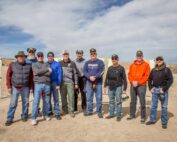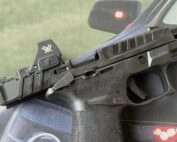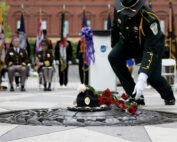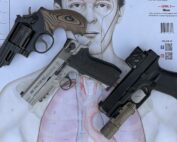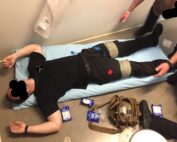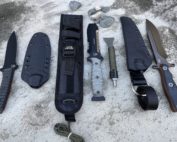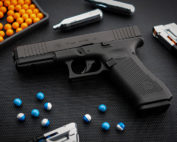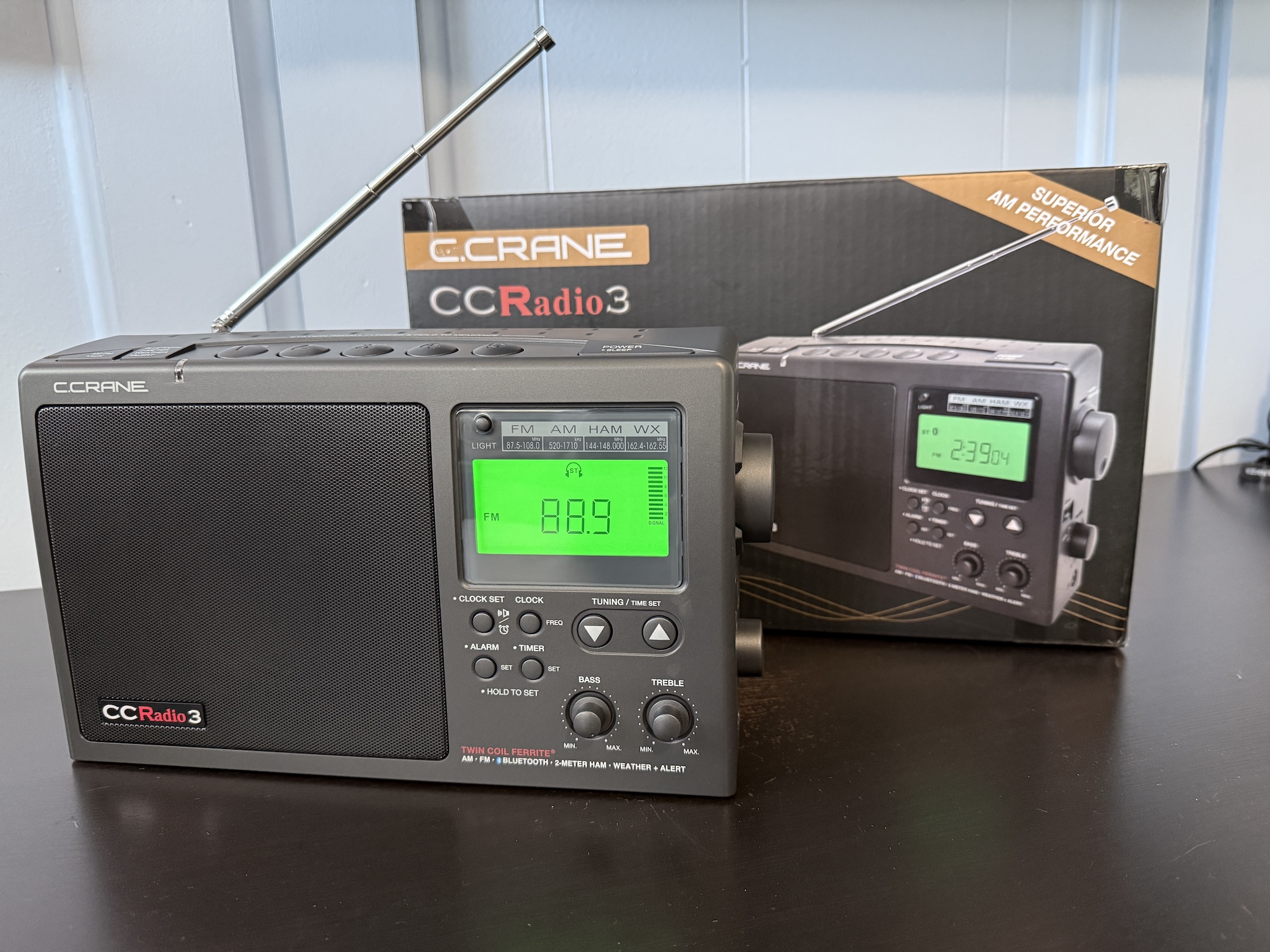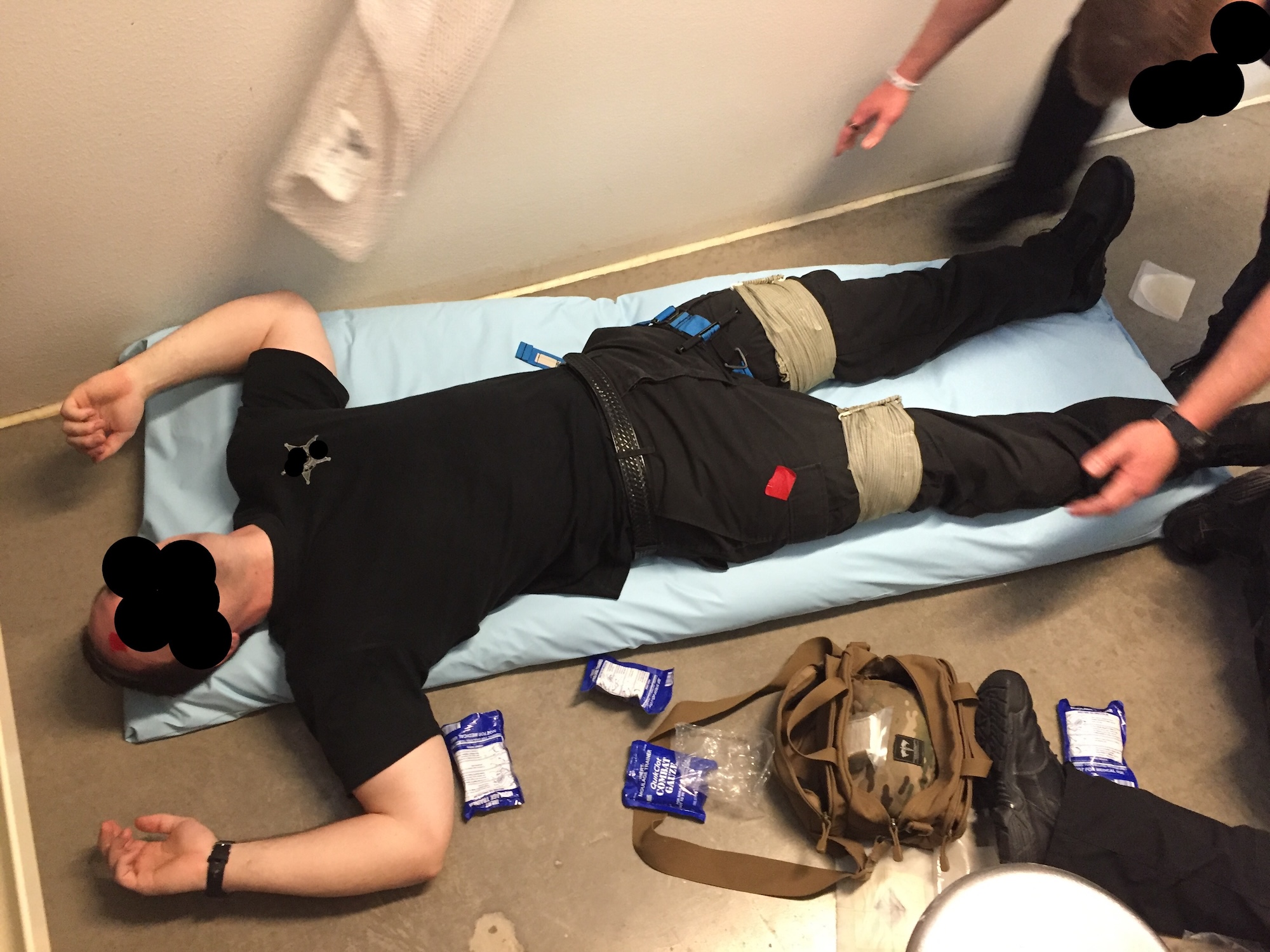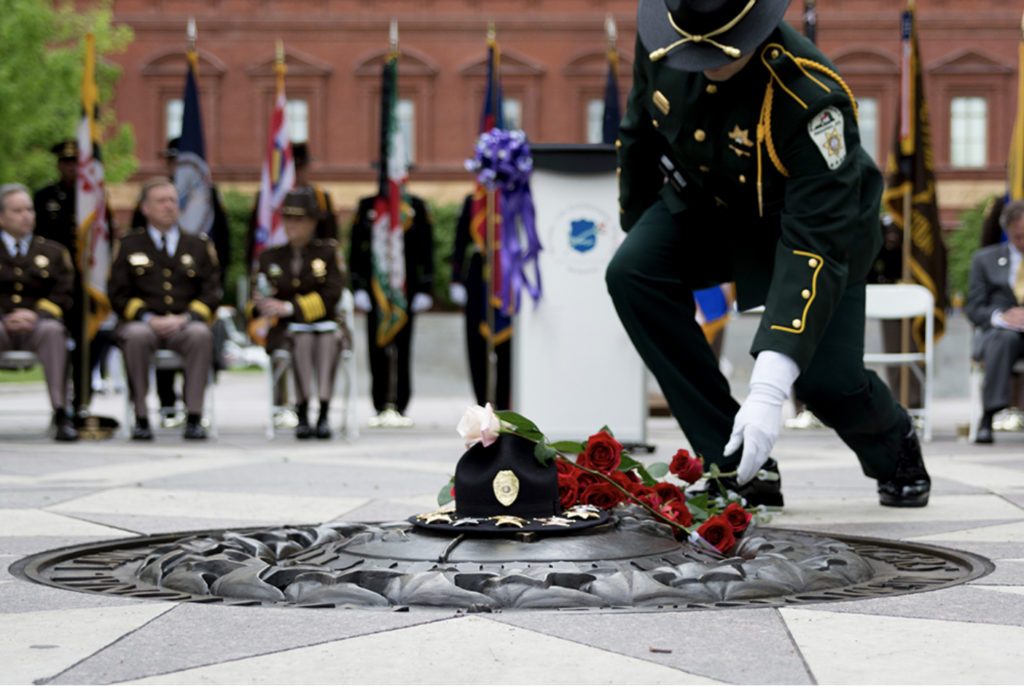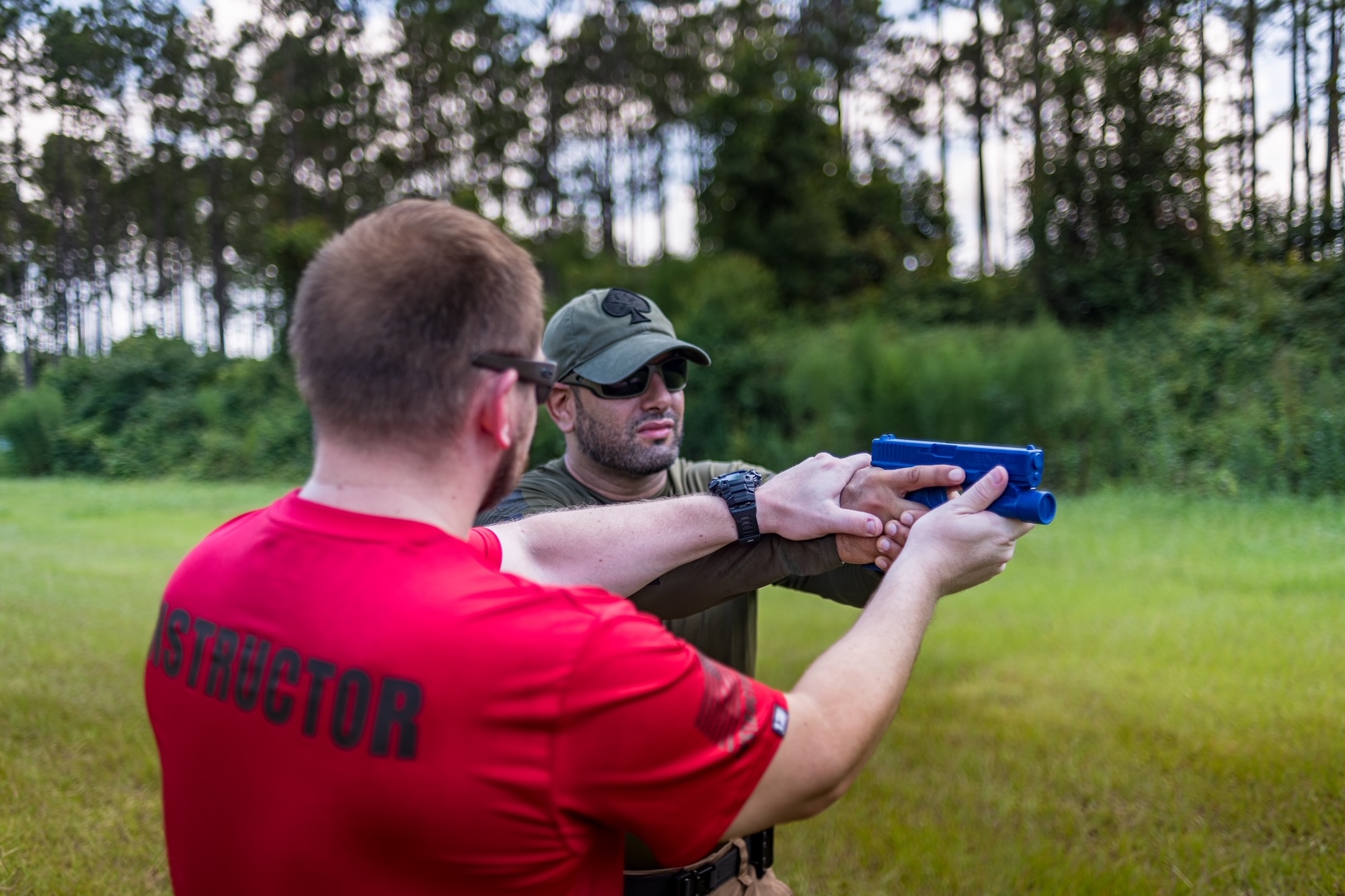
feature_Instructor
The use of inert training weapons is paramount for ensuring safety while honing critical skills. Two prominent brands in this field are Armament Systems and Procedures (ASP)Red Guns® and Ring’s Manufacturing Blueguns®. Both are meticulously crafted durably replicas of real firearms, constructed out of rugged polymer with steel reinforcement. They are designed to provide officers with realistic training experiences without the risks associated with live firearms. The weighted models match the original weapon’s weight, providing a more authentic training experience than their unweighted counterparts.
Both ASP and Ring’s offer high-quality training tools. ASP is unique in producing its Enhanced (Drop-Mag) Red Guns with functioning magazine releases and removable magazines. Blueguns are notable for their extensive range of models and accessory options.
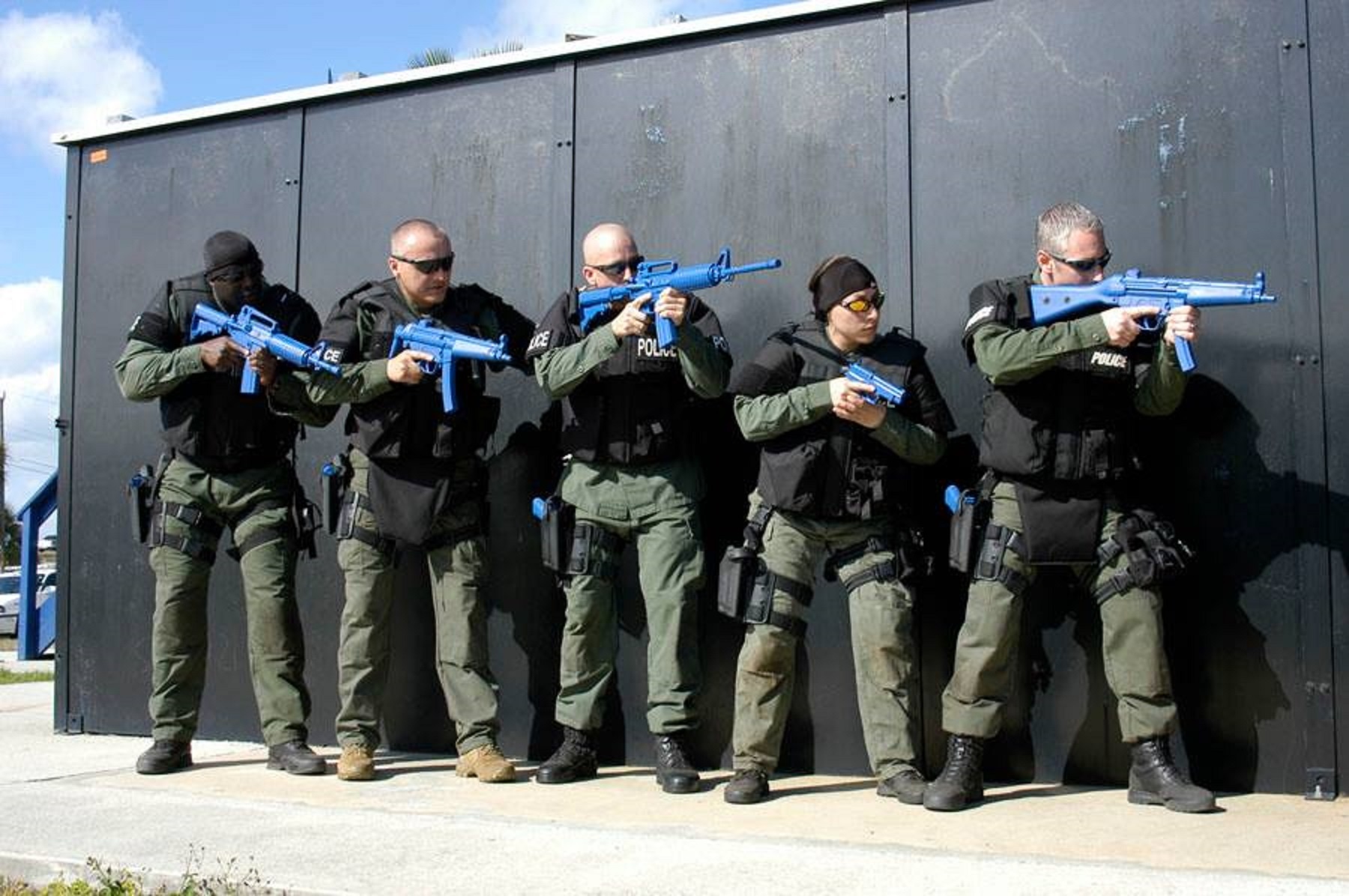
Police tactical teams employ inert training weapons to conduct realistic training exercises without the risk of injury. They allow officers to practice tactical scenarios safely and effectively. Photo: Ring’s Manufacturing.
These training aids are invaluable for practicing weapon retention, movement tactics, scenario training, and other critical skills in a controlled environment without the risk of accidental discharge or injury. By incorporating these high-quality training aids, law enforcement agencies can enhance the preparedness and effectiveness of their personnel, ultimately contributing to safer communities.
Role in Training
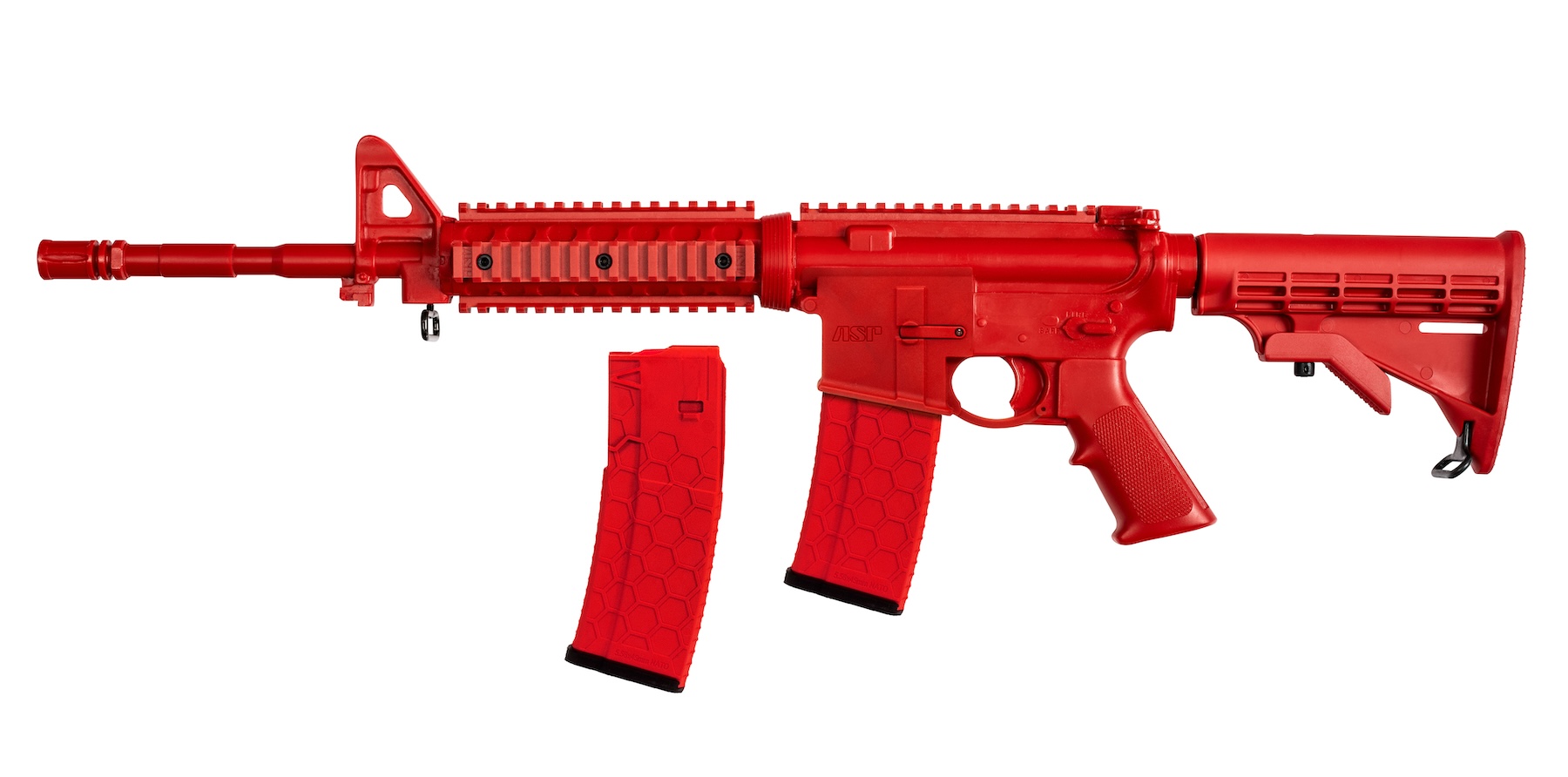
The ASP M4 Sliding Stock Enhanced Red Gun is an updated version of the popular ASP M4 Red Gun with sliding stock. It add the new drop mag feature. Photo: Armament Systems and Procedures (ASP).
The primary purpose of inert training weapons is to facilitate safe and effective training. They allow trainees to familiarize themselves with the feel of real firearms without the associated risks. Inert training weapons can be used to provide realistic and detailed training in many public settings without causing alarm. They may be used in environments where live firearms are not safe or practical.
The bright color reassures observers that the “gun” is harmless, alleviating any concerns. Given that many individuals feel uneasy around firearms, inert training weapons serve as ideal training tools, delivering the most realistic training possible without introducing actual firearms.
Inert training weapons are used in a variety of training scenarios, including firearms safety classes, concealed carry training, tactical training, and law enforcement and military training. They allow trainees to simulate real-life scenarios and improve their skills without compromising safety.
Weighted Models
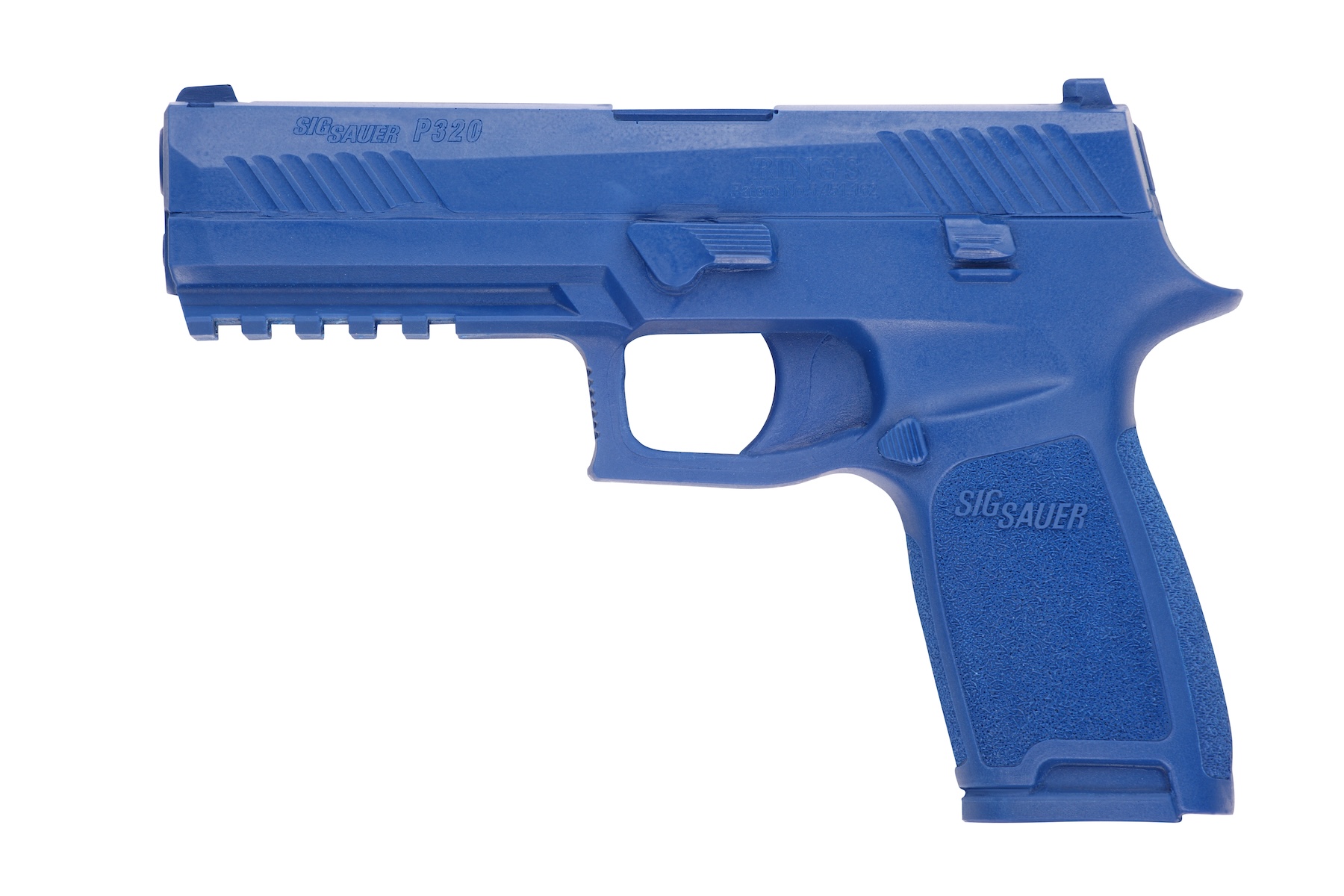
Inert weapons, such as this Ring’s SIG SAUER P320 Full Size Bluegun, can be used in the same holsters as the handgun they replicate. Due to their precision, holster makers and firearms accessory manufacturers use them. Photo: Ring’s Manufacturing.
Weighted inert training weapons, in particular, offer a more realistic experience as they match the original weapon’s weight. This allows trainees to familiarize themselves with the feel and weight of real firearms without the associated risks. Inert training weapons are invaluable for practicing safe firearm handling.
While inert training weapons serve as an excellent training tool, they have obvious limitations. They don’t fully replicate the functionality of real firearms, which can limit the realism of the training experience. They are well-suited for force-on-force (FoF) training and practicing weapon retention, but their effectiveness may be reduced in training scenarios that require shooting fundamentals. Unlike live fire, Simunition®, or some laser training systems, Inert training weapons lack a feedback mechanism when the trigger is “pulled.” Instructors employ several strategies to address the limitations during training exercises.
RBT and SET
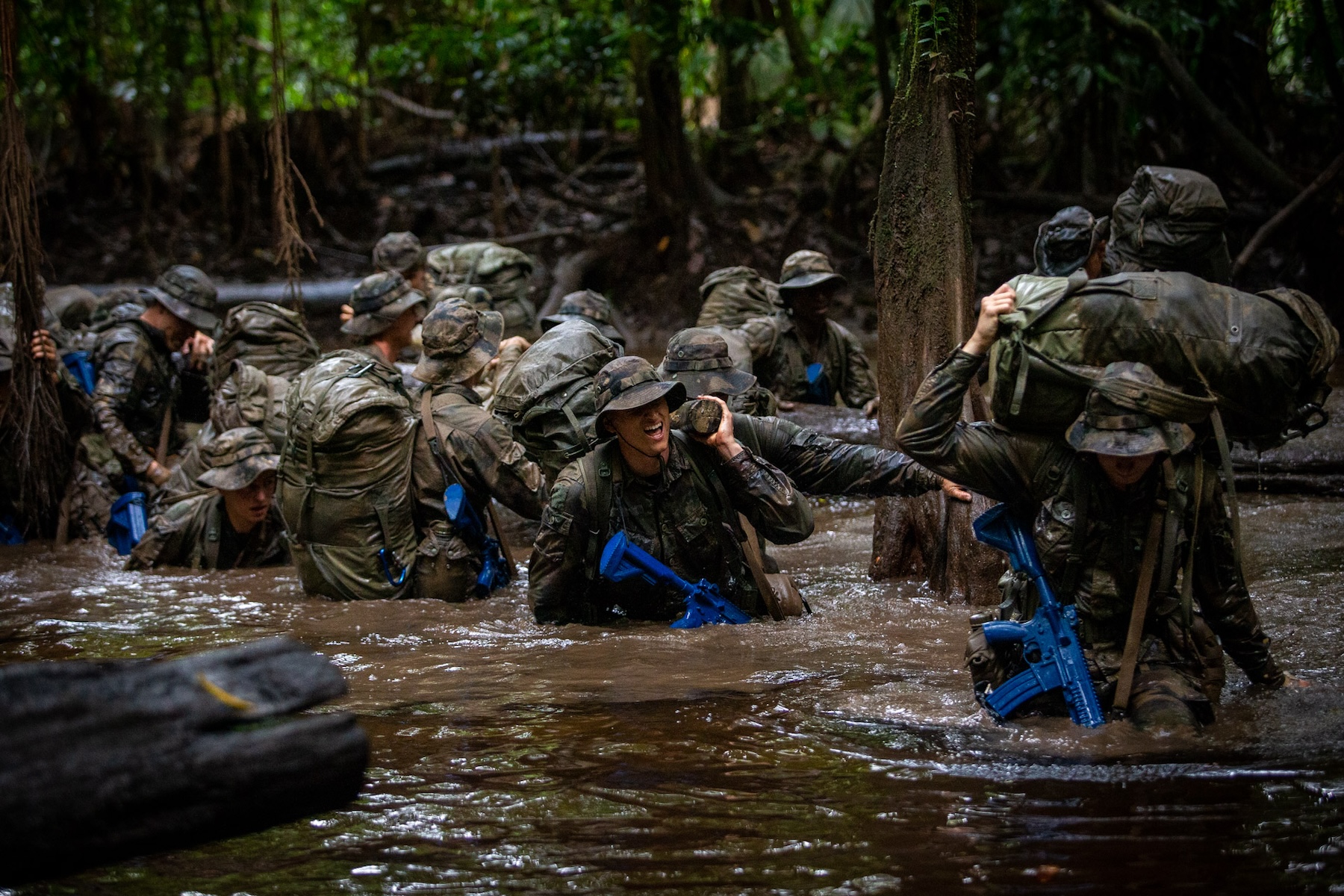
French Army soldiers training with Blueguns. Inert weapons are an integral part of training for military and law enforcement agencies around the globe. Photo: Armée de Terre (French Army).
Inert training weapons are incorporated into realistic scenarios that officers might encounter in their operational settings, bridging the gap between the classroom and real-world encounters through Reality-Based Training (RBT) or Simulated Event Training (SET).
RBT and SET are advanced training methodologies designed to bridge the gap between theoretical knowledge and real-world application. RBT immerses trainees in realistic scenarios that closely mimic the situations they might encounter in their operational environments. This type of training emphasizes decision-making, stress management, and tactical skills under realistic conditions. SET, on the other hand, focuses on creating specific, controlled events that simulate real-life incidents. These events are designed to test and enhance the trainees’ responses, coordination, and problem-solving abilities. Both RBT and SET are invaluable in preparing individuals for high-pressure situations, ensuring they are better equipped to handle real-world challenges with confidence and competence.
Using RBT and SET in firearms training offers several key benefits. Both RBT and SET create realistic scenarios that closely mimic real-life situations, helping trainees develop practical skills and responses. These training methods emphasize decision-making under pressure, teaching trainees not only how to use their weapons but also when and why to use them. By simulating high-stress environments, RBT and SET help trainees learn to manage stress and maintain composure during critical incidents. Trainees can practice and refine their tactical skills in a controlled yet realistic setting, improving their overall effectiveness.
Training
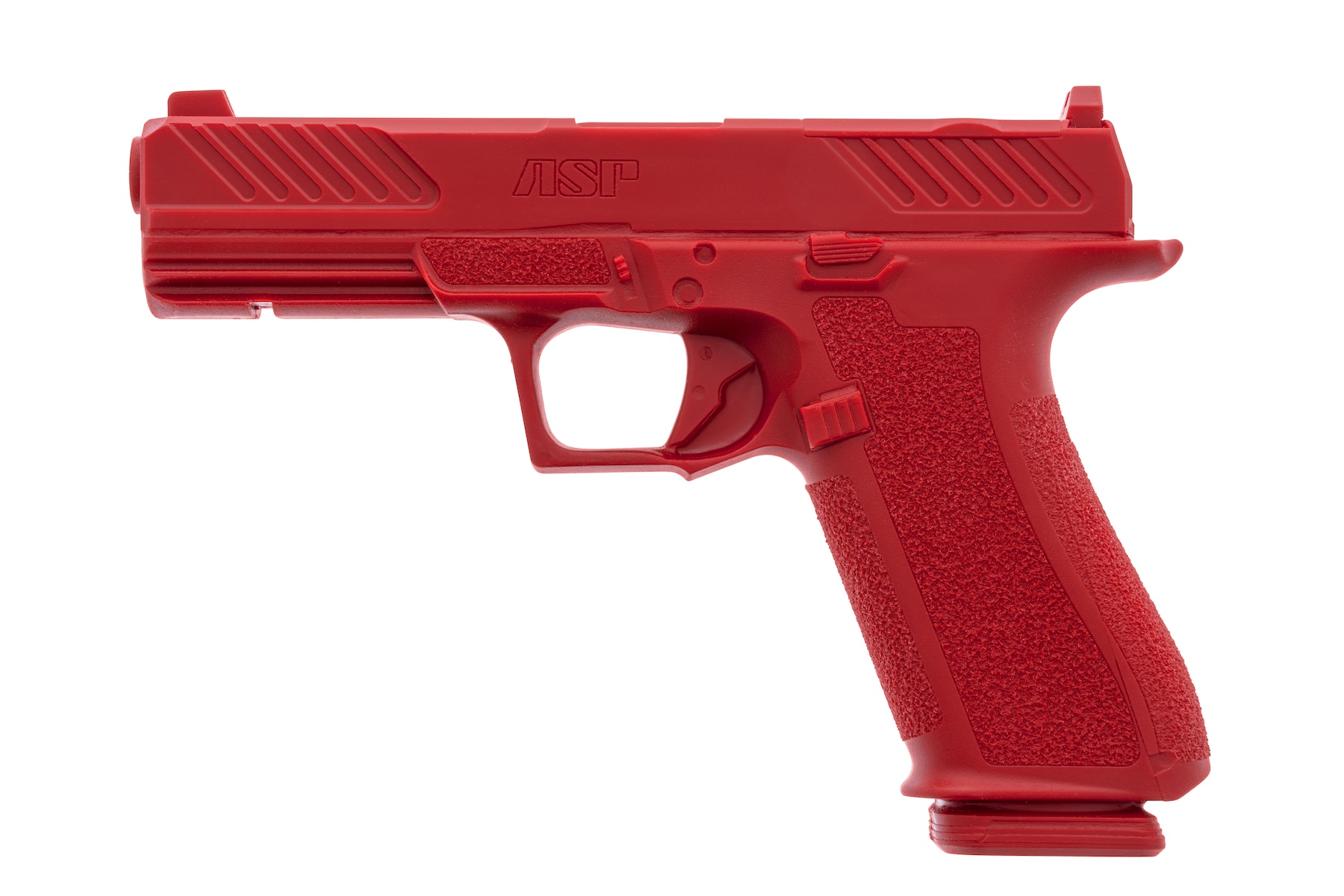
Made from durable polymer with steel reinforcement, inert weapons such as this ASP Shadow Systems DR920 Red Gun are easily identifiable by their bright color, which easily identifies their status to observers and ensures safety during training exercises. Note the high level of detail which results from molding it from the original weapon. Photo: Armament Systems and Procedures (ASP).
These training methods allow officers to safely practice handling potentially dangerous situations without the risks of using live firearms. Repeated exposure to realistic scenarios builds trainees’ confidence in their abilities to handle real-world challenges. RBT and SET often involve team-based exercises, enhancing communication, and coordination among team members. Instructors can provide immediate feedback, allowing trainees to learn from their mistakes and continuously improve their performance. Overall, RBT and SET are invaluable in preparing individuals for real-world encounters, ensuring they are better equipped to handle high-pressure situations with confidence and competence.
Instructors also focus on decision-making training, teaching not just how to use a weapon but also when to use it. This involves integrating various skills into a series of actions and applying them under realistic conditions. Rigorous safety procedures play a crucial role in training. No live firearms should be allowed in the training area. Confidence in these procedures allows trainees to be comfortable during scenario-based training and eliminates any chance of accidents. By incorporating these strategies, instructors can enhance the realism of inert training weapon exercises and provide valuable, safe, and effective training.
Summary
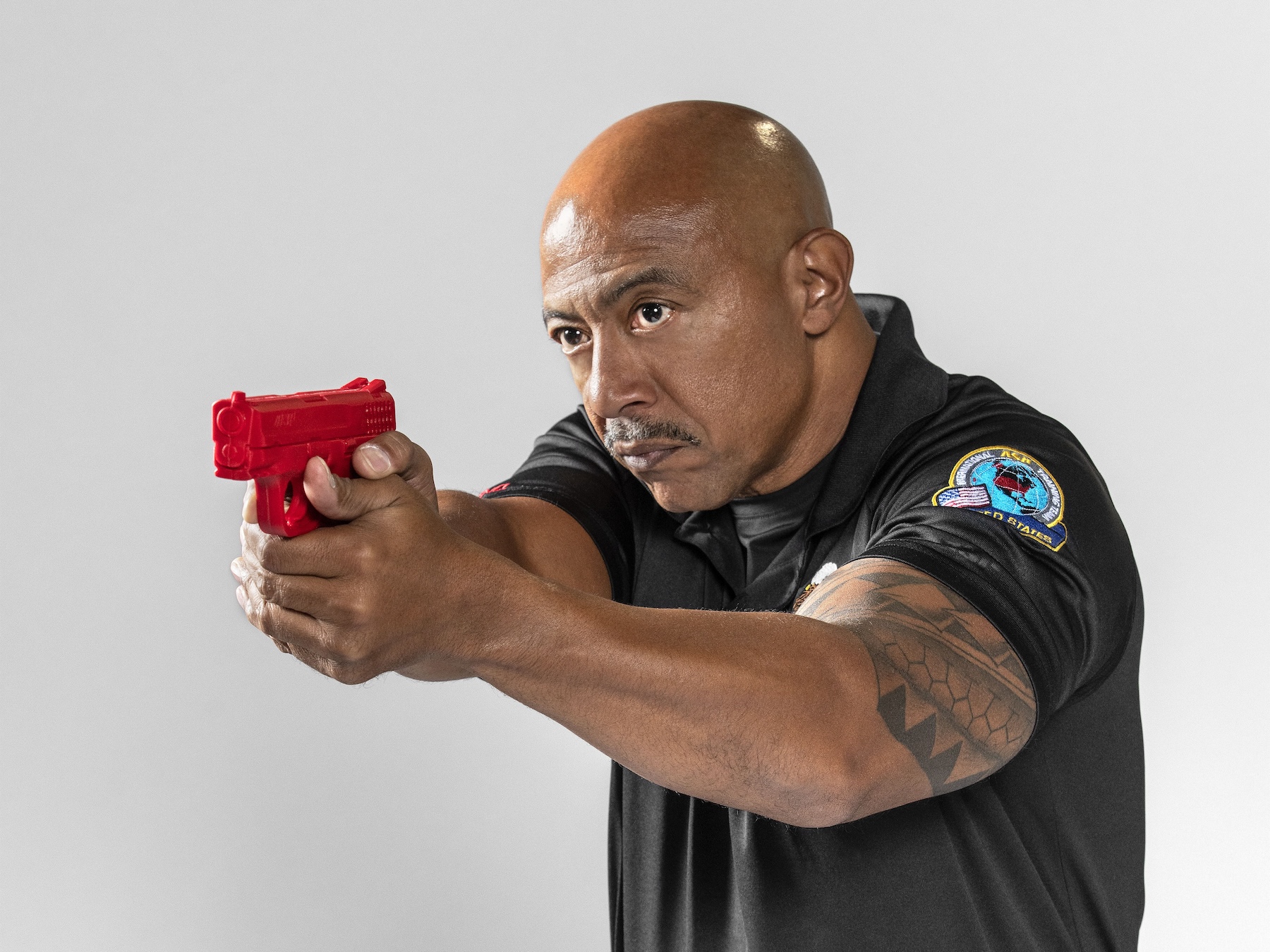
By incorporating inert weapons, such as this replica M&P, into various training scenarios, instructors can enhance the realism and effectiveness of their programs while maintaining a high level of safety. Photo: Armament Systems and Procedures (ASP).
Inert training weapons provide a safe, effective, and realistic tool for law enforcement training, preparing officers for real-life encounters. The distinctive color ensures they are easily recognizable as non-threatening, reducing anxiety and allowing trainees to focus on developing their skills.
Despite some limitations, such as the lack of functional realism and feedback mechanisms, inert training weapons are an invaluable asset in the training arsenal. They enable officers to practice tactics, decision-making, and weapon handling in a controlled environment, ultimately contributing to better-prepared and more confident law enforcement professionals.
Resources
Armament Systems and Procedures (ASP)


 (+2 rating, 2 votes)
(+2 rating, 2 votes)